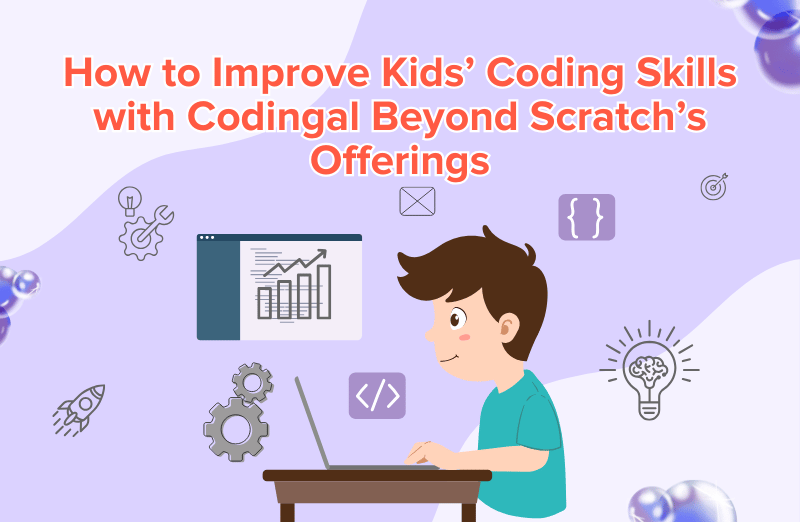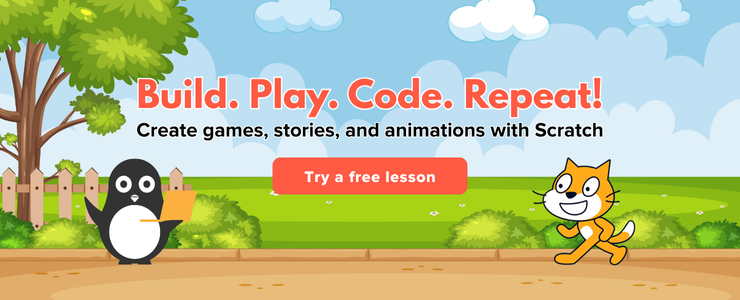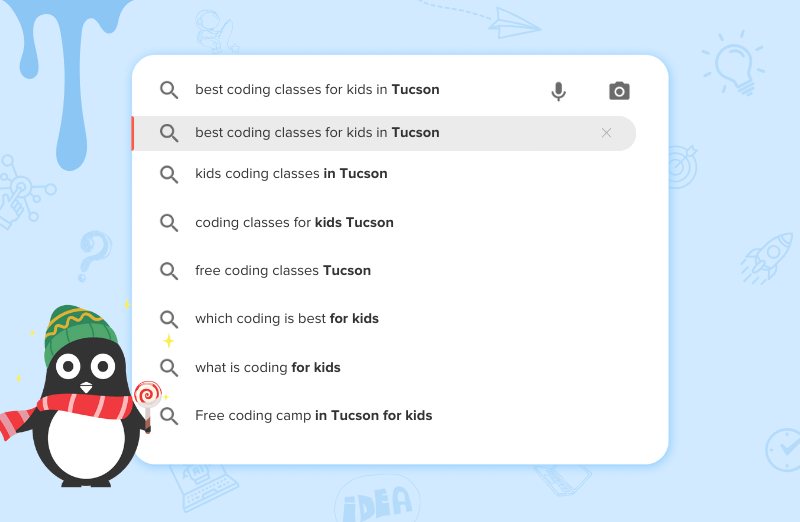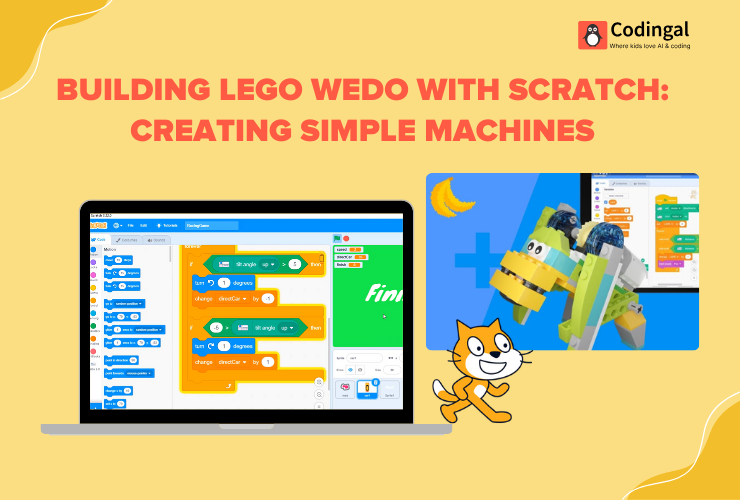Introduction
For busy parents and educators who wanted to choose the right coding platform with the right coding skills should start with the block based coding. Scratch is a brilliant launchpad for young coders. Its drag-and-drop interface sparks imagination and problem-solving skills without the pressure of syntax or complex commands. Yet, as learners grow, their curiosity naturally leads them to seek greater challenges and creative freedom. That’s where Codingal steps in by bridging the gap from visual coding to real-world programming in Python, JavaScript, and AI through a structured, globally accredited curriculum. With live 1-on-1 mentorship, hands-on projects, and national competitions, Codingal transforms curiosity into mastery to empowering children not just to experiment with code, but to build real websites, games, and data-driven projects that impress teachers, peers, and future colleges. This guide reveals how to take that next step—highlighting what comes after Scratch, the pathways Codingal provides, and practical ways to support your child’s smooth transition into advanced coding.
1. Scratch: A Brilliant Launchpad, But Only the First Stage
- Block coding removes syntax barriers, letting 8- to 16-year-olds “create interactive stories, games, and animations by simply dragging and dropping colourful blocks of code”.
- Research applauds Scratch’s openness; tutorials are “designed to encourage students to experiment, follow their interests, and express their own ideas”.
- Global accessibility fuels its popularity— the platform is “available in more than 70 languages”.
- Nevertheless, block tools mask real programming syntax, so students struggle when encountering semicolons, indentation, or debugging in text-based languages.
- Educators observe missing computer-science depth— there’s no built-in path for algorithms, data structures, or version control, limiting long-term skill growth.
2. Common Skill Gaps After Scratch & Why They Matter
- Text-Based Syntax Anxiety: Kids comfortable with colourful blocks often freeze when faced with
print("Hello")- a known hurdle since “Python offers a more text-based coding experience compared to Scratch’s visual programming interface.
- Limited Real-World Application: Employers use Python, JavaScript, and Java—not block stacks. Students need practice turning logic into typed commands to stay future-ready.
- Problem-Solving Rigor: While Scratch nurtures creativity, advanced concepts like functions, lists, and OOP require structured exercises beyond drag-and-drop.
- Competitive Edge: Only “26 % of elementary schools and 38 % of middle schools offer computer science classes”. Mastery beyond Scratch sets a résumé apart for STEM competitions and selective high schools.
- Portfolio Depth: College admissions increasingly value tangible tech projects; Scratch games rarely demonstrate scalable, maintainable code.
- Cognitive Benefits Go Untapped: Studies show coding strengthens logic, creativity, and resilience—skills “that improve problem-solving and digital literacy”.
3. How Codingal Seamlessly Bridges the Gap
1. Structured Curriculum That Scales with Age
- Codingal is “specifically designed for kids and provides a structured, age-appropriate curriculum,” starting with blocks and advancing to Python, HTML, and AI.
- Every learner follows clear milestones. Beginners stack Scratch blocks; intermediates prototype Android apps; advanced coders tackle algorithms akin to the IOI.
- STEM-accredited lesson plans align with the K-12 Computer-Science Framework, ensuring academic rigor without sacrificing fun.
2. Live Expert Mentors & AI Tools
- Personalized attention drives motivation; live 1-on-1 sessions keep kids “engaged and motivated”.
- 300+ expert educators means a tutor who matches each learner’s pace and interests.
- AI practice labs provide instant code checks, giving students quick feedback between live classes—precision that passive video courses can’t match.

3. Project-Based Learning & Competitions
- “Codingal encourages creativity with project-based learning, where kids develop their own apps, websites, and games”.
- Regular hackathons like the National Coding Olympiad expose students to time-boxed problem solving, replicating real developer sprints.
- Public project showcases build a shareable portfolio, instilling pride and accountability far beyond private Scratch studios.
4. Transitioning from Blocks to Typed Languages: A Roadmap
1. Python—Gentle but Powerful
- Python’s simple syntax makes it “suitable for kids aged 10 and up”.
- Real-world hooks—data science, web scraping, automation—show students why typed code matters.
- Codingal’s Python for Kids track starts with turtle graphics (visual win!) then moves into loops, functions, and basic AI models.
2. JavaScript & Web Development
- JavaScript is “a versatile language used for web development, game development, and mobile app development”.
- Live webpages bring instant gratification, mirroring the immediacy of Scratch sprites yet adding professional depth.
- Codingal’s Web Dev course covers HTML/CSS first, layering JS interactivity later—students publish portfolio sites that recruiters can actually visit.
3. Data Science & AI Early Exposure
- STEM job growth will hit 10.5 % from 2020-2030, outpacing non-STEM fields.
- Codingal’s AI modules let teens build sentiment analysis tools or simple image classifiers—projects unimaginable in block-only environments.
5. Comparison Snapshot: Scratch vs. Codingal Progression
| Feature | Scratch | Codingal (Beyond Scratch) |
|---|---|---|
| Primary Interface | Visual blocks | Blocks → Text editors |
| Languages Offered | Scratch blocks only | Scratch, Python, JavaScript, Lua, Java, C++ |
| Curriculum Depth | User-generated tutorials | Accredited pathways up to Olympiad algorithms |
| Instruction Style | Self-paced videos & forum | Live 1-on-1, small-group, AI-powered labs |
| Project Scope | Games & animations | Apps, websites, AI projects, competitive challenges |
| Community Engagement | Global online sharing | Hackathons, school partnerships, Olympiads |
6. Real Stories: When Kids Level-Up with Codingal
- Sam, 11, used Scratch to animate comics. After switching to Codingal’s Python track, he built a quiz app that teachers now use—in 3 months.
- Aarushi, 14, loved Scratch games. Codingal’s JavaScript boot camp enabled her to publish a multiplayer game on itch.io, attracting 2 000 plays.
- Diego, 16, joined Codingal’s IOI Algorithms course. He cracked regional Olympiad problems and now mentors younger coders in his school.
- Stories like these echo the article’s insight that “platforms should provide appropriate challenges to engage the child without overwhelming them”.
7. Parental Playbook: Supporting the Jump Beyond Scratch
- Celebrate small wins. When kids debug their first Python loop, treat it like scoring a goal—positive reinforcement cements confidence.
- Set weekly showcase sessions where your child demos progress; public speaking builds articulation and deepens understanding.
- Pair coding with interests: A Minecraft-loving student might enjoy Lua scripting or Tynker-style mods—“learning through games will also be super fun”.
- Use community resources like GitHub starter repos or Code.org modules; diversifying tools helps kids “develop a deeper understanding of coding principles”.
- Balance autonomy and guidance. Research says kids thrive when “platforms are designed to make learning to code an enjoyable experience”.
8. Why Live Mentorship Outshines Self-Paced Videos
- Motivation spikes with human interaction; kids asking “Why did my code crash?” get immediate answers, not forum wait-times.
- Customized pacing prevents boredom or burnout—tutors adapt challenges on the fly, embodying the “structured, progressive curriculum” absent in static courses.
- Role-model effect: Seeing adult coders demystifies tech careers, nurturing long-term persistence in STEM.
9. Codingal Course Paths at a Glance
- Foundation (Grades 1-4): Scratch + Blockly mini-games build logic; outcome = animated stories portfolio.
- Explorer (Grades 5-6): Python basics, web design, robotics; outcome = website & turtle projects.
- Creator (Grades 7-8): JavaScript, game development, intro to data science; outcome = published web app.
- Pro (Grades 9-12): AI/ML, competitive programming, AP CS A; outcome = Olympiad problems solved, ML model demos.
- Seasonal Camps & Olympiads let kids deep-dive into Roblox scripting, VR, or hackathons—skills sharpened under time pressure.
10. FAQs: Clearing Up Parent Concerns
- “Isn’t Python too hard after Scratch?” Its syntax is famously kid-friendly and “popular for ages 10+”.
- “Do we need expensive software?” Codingal uses browser-based IDEs; Chromebooks suffice.
- “How much time weekly?” 2-3 hours of class + practice yields steady progress without homework battles.
- “Can my child switch tracks?” The curriculum is modular—mentors realign goals if interests change.
- “What about social interaction?” Small-group classes foster teamwork; national competitions add healthy rivalry.
11. Get Started: Three Simple Steps
- Book a free diagnostic session on Codingal.com—assess current level and learning style.
- Select a pathway (Foundation, Explorer, Creator, Pro) with guidance from an academic advisor.
- Watch your child build & publish. Within weeks, they’ll move from dragging blocks to typing functions—proof arrives in GitHub commits and playable apps.
12. Key Takeaways
- Scratch sparks interest, but progression stalls without exposure to typed code, algorithms, and real-world projects.
- Codingal provides that bridge through live mentorship, accredited curricula, and a ladder of languages—from blocks to AI.
- Early mastery opens doors, especially when only a fraction of schools teach computer science, yet STEM jobs grow faster than any other field.
- By upgrading from Scratch to Codingal, kids transform from playful coders to confident creators ready for tomorrow’s tech landscape.
Ready to see your child’s skills soar beyond blocks?
Visit Codingal today and unlock their coding superpowers.
FAQ Section
What makes Codingal different from Scratch?
Codingal offers a structured progression from visual block coding to typing languages like Python and JavaScript, with live mentorship and accredited curricula.
Why is it important to move beyond Scratch in coding education?
Moving beyond Scratch helps children learn real-world programming languages, prepare for STEM careers, and engage with complex projects that develop problem-solving skills.
How does Codingal support children’s learning progression?
Codingal provides a scalable curriculum with milestones, one-on-one mentorship, project-based learning, and competitions to support and motivate students through each stage.
Can Codingal help with learning advanced computer science concepts?
Yes, Codingal introduces advanced topics such as algorithms, data structures, and artificial intelligence, which are crucial for long-term skill development in computer science.
What are the benefits of live mentorship in coding education?
Live mentorship offers personalized pacing, immediate feedback, and motivation through human interaction, fostering a deeper understanding and long-term interest in coding.














